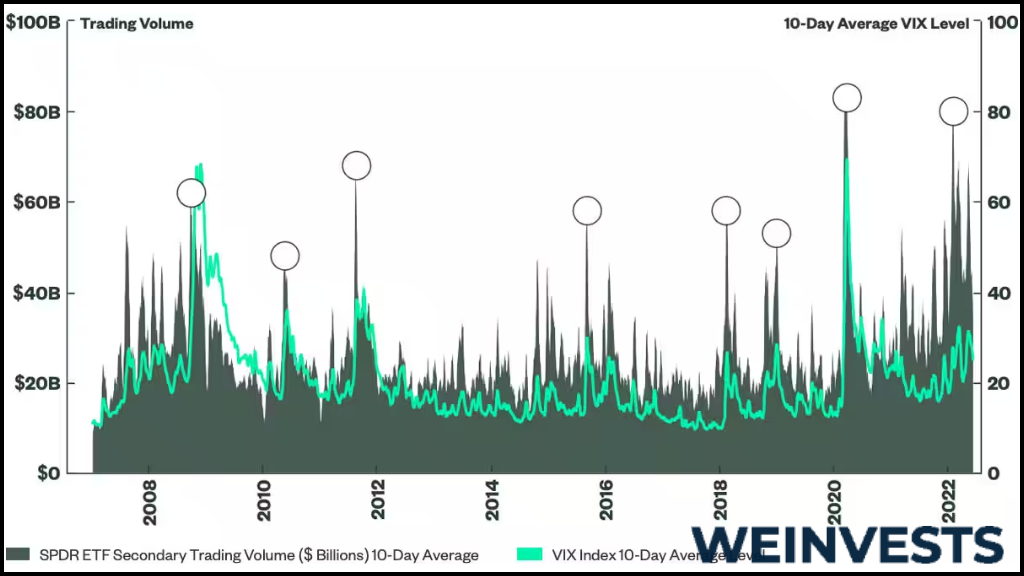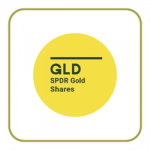This content represents the writer’s opinions and research and is not intended to be taken as financial advice. The information presented is general in nature and may not meet the specific needs of any individual or entity. It is not intended to be relied upon as a professional or financial decision-making tool.
The SPDR Dow Jones REIT ETF, or RWR, is an exchange-traded fund that gives investors access to a variety of real estate investment trusts (REITs). The Dow Jones U.S. Select REIT Index, which comprises firms that own and manage income-producing real estate is what RWR is intended to monitor.
By making investments in a variety of REITs, the fund can meet its goal of giving investors access to a diverse portfolio of real estate assets without the requirement for direct property ownership. RWR may also appeal to investors looking for dividends because REITs must also legally pay at least 90% of their taxable revenue to shareholders in the form of dividends.
This article’s goal is to give a thorough analysis of RWR, which will include the fund’s performance, underlying holdings, fees, and other crucial factors that investors should take into account when assessing the fund.
Table of Contents
ETF Fundamentals
As of January 31, 2022, the SPDR Dow Jones REIT ETF held 99 securities, with an average market capitalization of $19.3 billion. The largest holdings in the ETF were in the residential, healthcare, and office sectors. The top ten holdings of the ETF, which comprised 47.20% of the ETF’s total assets, included well-known REITs such as American Tower Corporation, Prologis Inc., and Public Storage as shown in the following table:
| Top 10 Holdings | Weighting in % | |
| 1. | Prologis Inc. | 12.08% |
| 2. | Equinix Inc. | 6.95% |
| 3. | Public Storage | 4.93% |
| 4. | Realty Income Corporation | 4.33% |
| 5. | Simon Property Group Inc. | 4.23% |
| 6. | Welltower Inc. | 3.84% |
| 7. | Digital Reality Trust Inc. | 3.38% |
| 8. | AvalonBay Communities Inc. | 2.62% |
| 9. | Alexandria Real Estate Equities Inc. | 2.52% |
| 10. | Equity Residential | 2.33% |
The SPDR Dow Jones REIT ETF charges an expense ratio of 0.25%, which is relatively low compared to other actively managed real estate mutual funds. The expense ratio covers the costs associated with managing and operating the ETF, including fees paid to the ETF’s investment advisor, custodian, and other service providers.
Investors may additionally pay brokerage charges, bid-ask spreads, and other costs when purchasing SPDR Dow Jones REIT ETF shares in addition to the expense ratio. Depending on the investor’s broker and trading activity, these expenses may change.
As that rising costs can considerably reduce returns over time, investors must think about how fees will affect their investment returns. For instance, for 10 years, a 1% difference in costs might result in a 10% difference in returns. As a result, it is often advised for investors to select ETFs with low expense ratios and to be aware of additional trading-related fees.
The SPDR Dow Jones REIT ETF may charge additional fees in addition to the expense ratio, such as transaction fees and cash balances retained by the fund. The net asset value (NAV) of the ETF is reduced as a result of these expenses, which might lower the value of an investor’s holdings.
Since dividends from REITs are typically taxed as regular income, investors should be aware of any potential tax consequences connected with purchasing SPDR Dow Jones REIT ETF shares. Nonetheless, the ETF’s use of in-kind transfers, which can lessen capital gains distributions, may enhance its tax efficiency.
The following list shows possible events which could affect the SPDR Dow Jones REIT ETF’s performance in the near future:
- Economic recessions or downturns
- Interest rate changes
- Changes in government regulations or tax policies
- Natural disasters – Climate risk
- Geopolitical risks
- Public health emergencies
Historical Performance
The SPDR Dow Jones REIT ETF has historically performed well, mirroring the success of the underlying REITs and the larger real estate market. Some of the key performance characteristics are highlighted below:
- The ETF has produced a yearly return of around 9% on average over the last ten years,
- The standard deviation of the ETF was about 15%,
- It had 18 positive and 5 negative years since its inception in 2001,
- The recent 2 large pullbacks were in 2020 and 2022, with the COVID-19 pandemic and the Russian-Ukrainian geopolitical war which caused rising interest rates and an inflation boom.
Nevertheless, changes in the real estate market and the performance of certain REITs may have an impact on the ETF’s performance. For instance, the COVID-19 pandemic caused enormous volatility in the real estate market and hence had a significant impact on the ETF.
The SPDR Dow Jones REIT ETF has made a significant comeback in recent months, demonstrating the continued recovery in the real estate industry, despite the difficulties brought on by the pandemic. By February 2023, the ETF has outperformed the S&P 500 Index for the same period, returning almost 9% so far this year.

It’s crucial to remember that previous success does not guarantee future outcomes, and investors shouldn’t base their decisions exclusively on past performance. Investors may learn more about the risk and return characteristics of the SPDR Dow Jones REIT ETF as well as its possible place in a diversified investment portfolio by examining the ETF’s characteristics.
Investment Strategy
Investing in REITs that produce income from real estate assets, including commercial, residential, and healthcare facilities, is the ETF’s investment strategy.
The Dow Jones U.S. Select REIT Index serves as the benchmark index that the ETF’s strategy is intended to closely match. The index comprises REITs from a variety of real estate markets, including:
- Residential
- Commercial
- Industrial
- Office Buildings
Also, it consists of REITs with a variety of regional diversity, providing exposure to developed markets in the US, Canada, and other countries. Although the ETF is mostly concentrated in the United States, which makes up around 85% of its holdings. The ETF does, however, also own REITs from developed economies including Japan, the United Kingdom, Canada, and others.
The SPDR Dow Jones REIT ETF has good sector diversity across several real estate markets. Retail, residential, and office buildings comprised the ETF’s top three sector holdings as of December 31, 2022, accounting for around 47% of the ETF’s total assets. In addition, the ETF includes REITs from the healthcare, industrial, and self-storage industries.
To replicate its benchmark index rather than beat it through active management, the SPDR Dow Jones REIT ETF uses passive management. In comparison to other actively managed real estate funds, the ETF’s expense ratio of 0.25% is quite low.
Risks and Considerations
The SPDR Dow Jones REIT ETF is a well-known exchange-traded fund that exposes investors to real estate investment trusts. However, investors should be aware of the risks and factors associated with investing in this ETF, which need to be considered.
The SPDR Dow Jones REIT ETF’s sensitivity to interest rates is one of its key dangers. It is significantly affected by changes in interest rates because it is an ETF that focuses on real estate. The cost of borrowing for REITs increases when interest rates rise, which may result in decreased profitability and real estate values. Moreover, macroeconomic events like a recession or a decline in the housing market might have an impact on the ETF’s performance.
It’s important to take the volatility of the ETF into account. Although the SPDR Dow Jones REIT ETF’s prospective gains might be alluring, investors should be warned that their investments could undergo significant price fluctuations.
Investors looking to include the SPDR Dow Jones REIT ETF in their portfolio should consider the following:
- Assess their investment goals and risk tolerance
- Diversify their portfolios to mitigate the risks associated with investing in a single asset
- Consider the ETF’s expense ratio, which can impact overall returns
- Carefully evaluate the potential tax implications associated with holding the ETF
Conclusion
The SPDR Dow Jones REIT ETF is a popular exchange-traded fund that provides investors with exposure to REITs. However, before investing, investors should consider the risks and possible rewards associated with the ETF.
The SPDR Dow Jones REIT ETF’s is sensitive to interest rates, market volatility, and macro or geopolitical factors which are important to take into account while assessing the investment option. Investors should also think about the expense ratio and any possible tax consequences while investing in the ETF.
For investors looking to gain exposure to the real estate industry, the SPDR Dow Jones REIT ETF is a can be an option, however, before investing, you should carefully examine your investment objectives and risk tolerance as well as ETF characteristics.
FAQs
What are the fees associated with investing in the SPDR Dow Jones REIT ETF?
In comparison to other REIT ETFs, RWR has an expense ratio that is relatively low at 0.25%. Other fees mght apply depending on the ivnestment channels and other market factors.
What is the expected return of the SPDR Dow Jones REIT ETF?
The SPDR Dow Jones REIT ETF’s anticipated return may change based on the state of the market and the performance of the underlying real estates. Investors should be aware that previous returns are not a guarantee of future performance.
How is the SPDR Dow Jones REIT ETF affected by interest rates?
The cost of borrowing for real estate investors increases when interest rates rise, which may result in decreased profitability and valuations.
WeInvests is a financial portal-based research agency. We do our utmost best to offer reliable and unbiased information about crypto, finance, trading and stocks. However, we do not offer financial advice and users should always carry out their own research.
Read More







